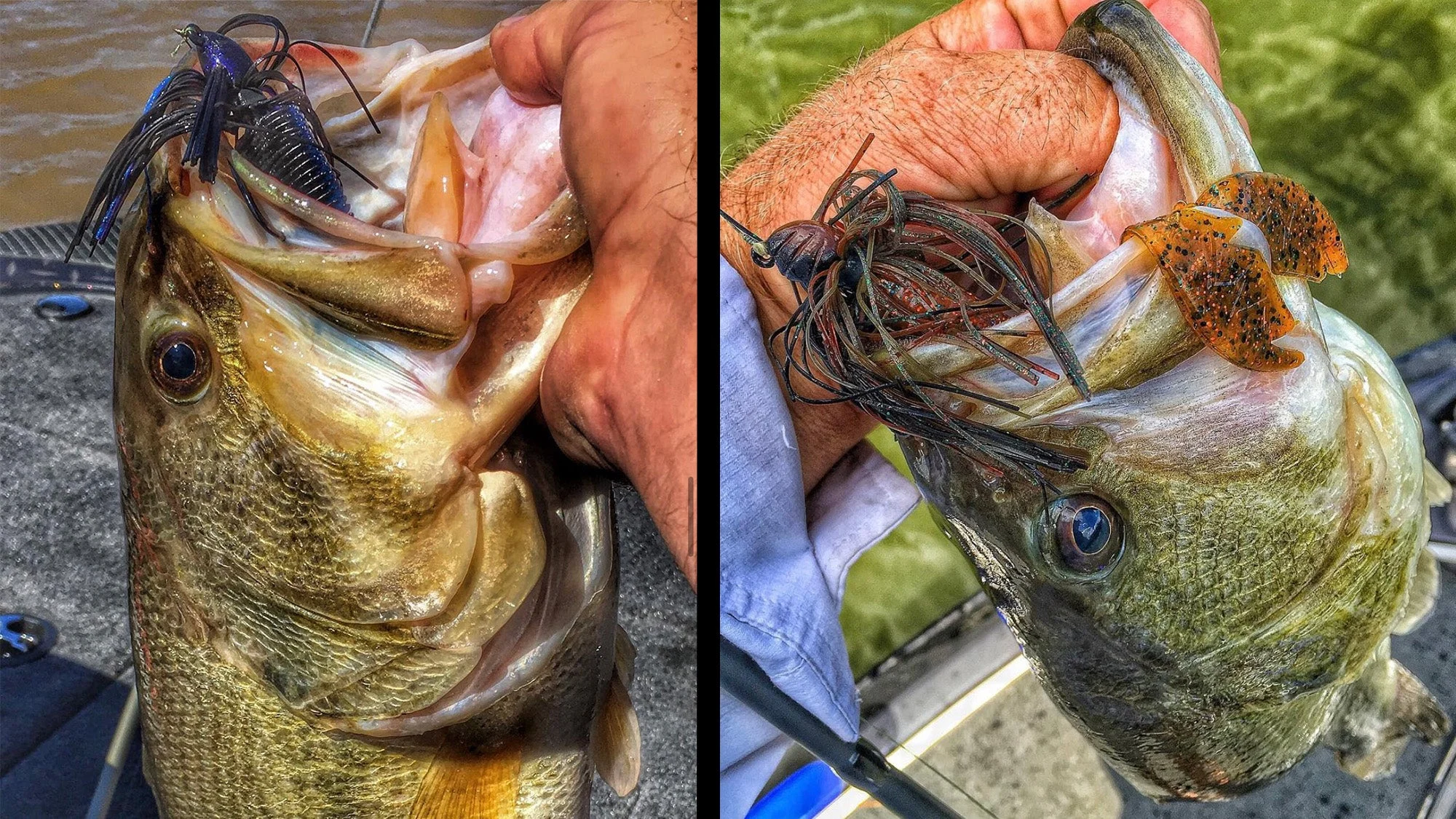The terms flipping, pitching, and punching are often used interchangeably by bass anglers. However, all three of these techniques are different and unique to specific situations. One thing they do have in common is they can all be used to catch monster largemouth, spotted, and smallmouth bass. You just need to know when and where to implement each tactic.
The trick to mastering flipping, pitching, and punching is learning the habitat and cover best suited for each technique. I put together this guide to walk through each style of fishing, including when and where to use each tactic. Plus, all the best gear you need for each technique. Master the flip, pitch, and punch, and you can stick giant bass all year long. Here’s how to do it.
Flipping, Pitching, and Punching Explained
Flipping, pitching, and punching are all different techniques. “Pitching” is the most common of the three. This method involves some type of Texas-rigged soft plastic or jig that is “pitched” using an underhanded cast to some type of cover a short distance from the boat.
“Flipping” is an old-school technique that is rarely used anymore, but works really well when fishing several pieces of cover close to the angler. To flip a bait, let out a few extra feet of line and then engage the reel. Then, using your non-dominant hand, pull the line between your reel and the first guide of the rod. Next, swing the bait back like a pendulum and out in one fluid motion while smoothly and simultaneously dropping your rod tip. This will allow you to precisely and gently place your bait alongside the cover.
“Punching” can actually be flipping or pitching. The only difference is that you’ll use a heavier weight and beefier gear to punch through thick, matted cover.
When and Where to Pitch
Pitching is a great technique to use when bass are holding near isolated cover. This can be during the spawn, the heat of summer, or the dead of winter. Anytime that bass are hanging close to stumps, reed clumps, dock posts, or other shallow cover, it’s a great time to pitch. Jigs are great for pitching, and so are Texas-rigged worms, tubes, and creature baits. The gear you need to pitch will vary based on the size of fish you’re targeting, the water clarity, and the density of the cover. A good place to start is a quality fluorocarbon in the 17-pound test range with a strong baitcaster and a 7-foot medium heavy to 7-foot, 3-inch medium heavy action rod.
Recommended gear for pitching:

When and Where to Flip
Flipping is most effective around shallow cover. This technique was a staple in the 1990s and decades before. But with the modern advancements of bass gear and the shift in focus to the offshore bite, very few anglers get close enough to cover to flip effectively.
Still, if you’re in a situation with an abundance of cover, moving in tight and picking it apart with a flipping rod is a great way to efficiently process an area quickly. You can use the gear similar to what you would pitch with, beefing it up a little due to the close quarters and the presence of additional cover. Fish will also be lively when you hook them close to the boat, so a stronger line and a slightly bigger rod are helpful for landing big bass.
Recommended gear for flipping:
Bait: Strike King Menace Grub
Weight: 3/8 VMC Tungsten Worm Weight
When and Where to Punch
Punching is a modified version of pitching or flipping. Using a big tungsten weight (1 ounce and up), you can Texas rig a soft plastic and punch it through thick mats of vegetation or debris. This technique is effective wherever heavily matted vegetation is present. It is especially effective in the spring and fall when bass are shallow.
In the spring, when bass are working through the pre-spawn, spawn, and immediate post-spawn phases, they’ll often hunker down in thick mats of vegetation. They’ll do this again in the late summer and fall when bluegill and other baitfish mix in with the thicker vegetation. During these times, there's no better way to dig big bass out of dense cover than punching. But you’ll need some stout gear to get them out.
Recommended gear for punching:
Bait: Missile Baits D-Bomb

Catch More Bass Flipping, Pitching, and Punching
Whether you prefer to flip, pitch, or punch, these methods are great ways to catch big bass in shallow. And they are all advantageous at different times as well. Punching allows you to present a bait to a bass in areas that are inaccessible via any other technique. Flipping is a great way to attack a shallow, target-rich environment. And pitching is one technique every angler should learn to fish shallow cover year-round.


